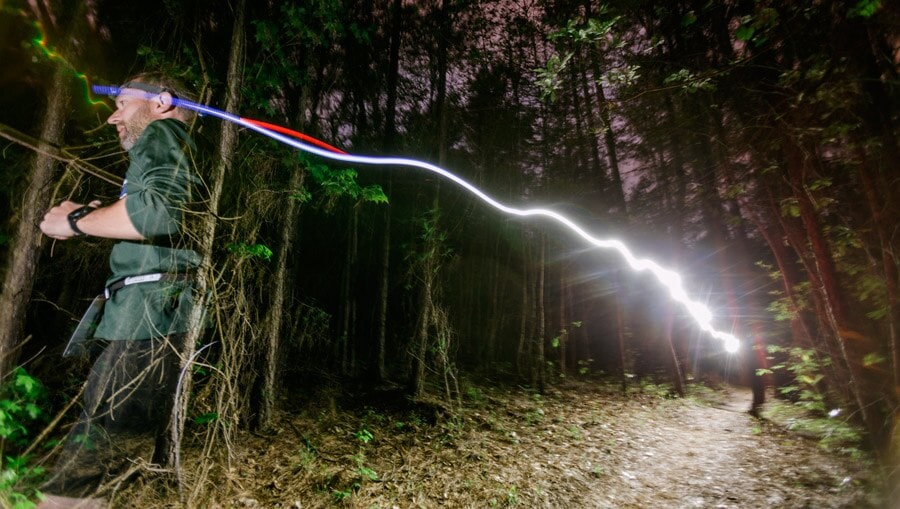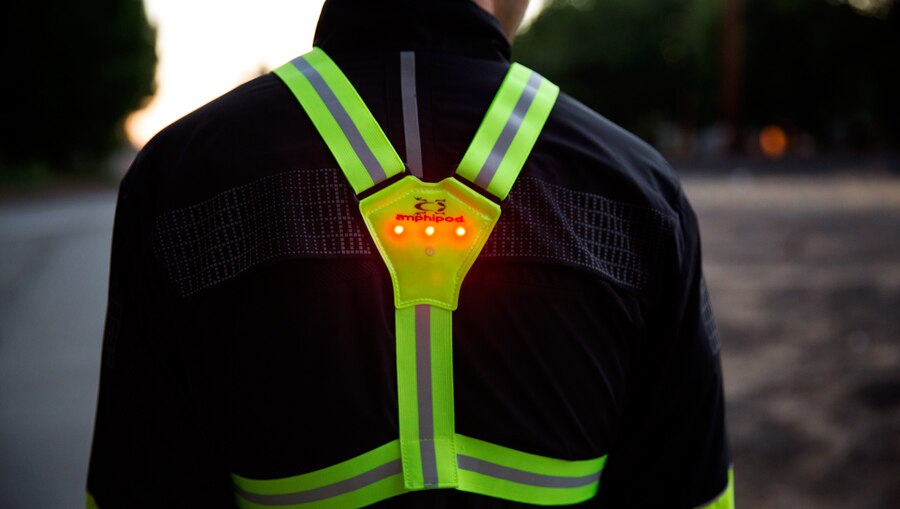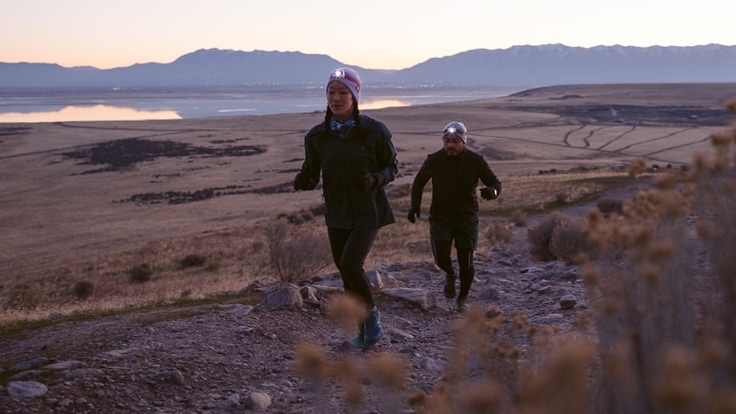Running through the quiet night landscape can be a beautiful and peaceful experience. That said, unfamiliar sounds and situations can also be intimidating and anxiety inducing. To make your run more fun and successful, we offer up some encouragement and tips about the following:
- Why you might like to trail run at night
- How to light your way when trail running at night
- Precautions for trail running at night
Video: 5 Tips for Running at Night
Why Trail Run at Night?
At first, trail running at night might not seem like the most logical choice. But there are several reasons why you might actually choose to head out after sunset:
Busy schedules: Life often requires balancing work duties, social commitments and family responsibilities, which leaves little time for trail running. Running after the kids have gone to bed or you've said goodbye to friends might be the only chance you get.
Cooler temperatures: If you live in a locale where scorching summertime heat can be unbearable, the nighttime may be the only part of the day where temperatures are cool enough to allow for running.
Short days: There's not much daylight during the winter months, so your after-work run may have to be in the dark.
You signed up for it: If you're running a Ragnar relay or an ultradistance race, running at night may be a prerequisite of the event.
It's fun: Running at night doesn't have to feel like a chore. In fact, being out after dark can energize your runs and add a bunch of fun. That same old trail you've run a gazillion times during the day can feel completely new at night. While you're out there, take the time to stop and admire your shadow that's cast by a full moon or gaze up at the stars (there are free smartphone apps that'll identify constellations for you). You can even bring along a light-up flying disc to throw around in a field with friends.
Lighting for Trail Running at Night

Lighting is one of the most important considerations for trail running at night. If you're lucky enough to have clear skies, a full moon, and gentle, open terrain, you may have enough light to find your way. However, in most cases you'll want to have a headlamp and/or flashlight, (and even if you're running in moonlight, it's wise to carry a light just in case). Whether you choose a headlamp or a flashlight or both, carry extra batteries on long runs.
Headlamps vs. Flashlights
Some runners like the combination of a headlamp and a flashlight. It's a little extra weight to carry, but using two light sources casts beams from different angles that can help with your depth perception and eliminate shadows that a single light source creates. The combination also allows you to keep the flashlight always aimed at the trail while you look around for trail markers or the source of a strange noise in the woods. And by carrying two lights you'll always have a backup if one stops working. Whichever option you choose, below are some buying tips for each.
Headlamps keep your hands free so you can focus on your running form or reach for an energy gel while you're on the go. The headlamp you use for camping might cut it, but choosing a running-specific one will ensure the best combination of brightness, beam shape and comfort on your head. When shopping for a headlamp for trail running, look for these features:
- Minimum output of 200 lumens
- Comfortable fit on your head
- Minimal bounce while you run
- Adjustable beam that lets you set the beam on the wide flood setting for good peripheral vision or spot setting when you need to see farther down the trail
- Multiple brightness levels so you can increase or decrease the light output based on your needs (which also gives you control over battery life)
You can learn more about headlamps in our Headlamps: How to Choose article.
Flashlights: Some runners prefer a flashlight to a headlamp because they find that light coming from their hand illuminates the trail better than light from their head. Also, you can aim a flashlight beam in any direction without having to turn your head like you do with a headlamp. When shopping for a flashlight for trail running, look for the following:
- Minimum output of 200 lumens
- Comfortable fit in your hand
- Optional strap system to secure the light to your hand so you don't have to grip the light the whole time
You can learn more about flashlights in our Flashlights: How to Choose article.
Precautions for Trail Running at Night

Trail running at night can be more intimidating and challenging than when you go during the day. Consider these precautions and tips to keep running along and having fun.
Know your route: It can be easy to get turned around in the dark, even on a trail that you've been on a bunch of times during the daylight hours. Stay alert and keep your eyes open for trail markers and turns. If you're in an unfamiliar area, make sure you carry a map and compass, or a GPS.
Slow down: Darkness makes terrain more challenging, even on familiar trails. Those rocks and roots you easily hop over during the day can be tough to negotiate with less light. Slow down and don't expect to run at the same pace you would in daylight.
Be seen: If part of your run takes you onto a road, make sure you are visible to oncoming traffic. Wearing bright clothing and reflectors is essential. Placing reflectors on your moving body parts, such as your feet and arms, will distinguish you from a stationary object like a reflective road sign. Using a clip-on blinking light is also a great idea. If you'll only be on trails, reflective clothing isn't as critical, but it can help you and your running partner(s) keep track of each other.
Leave the earbuds behind: Because you're running at night you'll already have diminished sight so why reduce your hearing, too? Give yourself every advantage and ditch the earbuds so you can hear other runners, wildlife or oncoming vehicle traffic.
Bring a cellphone: If something does go wrong during a run, you'll be relieved to have a cellphone so you can make a call. Be aware: You can't count on getting cell service everywhere in the mountains.
Bring layers: With the setting sun comes cooler temperatures. Make sure to account for this and dress accordingly. Check the forecast to see what the nighttime low temperature will be. If you start out before sunset, bring along an extra layer to pull on when it cools off.
Be ready for wildlife: Most animals hunker down at night and for those that don't, the sound of you running will likely spook them away. But, there are sure to be some curious critters out there so be aware of your surroundings and listen and look for wildlife on the trail. Do some research on animals that are common in the area where you're running and know how to respond appropriately if you encounter one.
Bring a friend: There's no doubt about it: Trail running at night can be mentally challenging and your mind can be your own worst enemy when you're out there by yourself. Once the sun goes down, every snap of a twig or looming shadow can feel like a threat. If you're new to trail running at night, don't go alone until you're completely comfortable with it. Simply having someone to talk to can keep your mind from wandering to unhelpful places.
Tell someone where you're going: Day or night, you should let someone know where you're going in case you don't make it back in the time you expect to.
